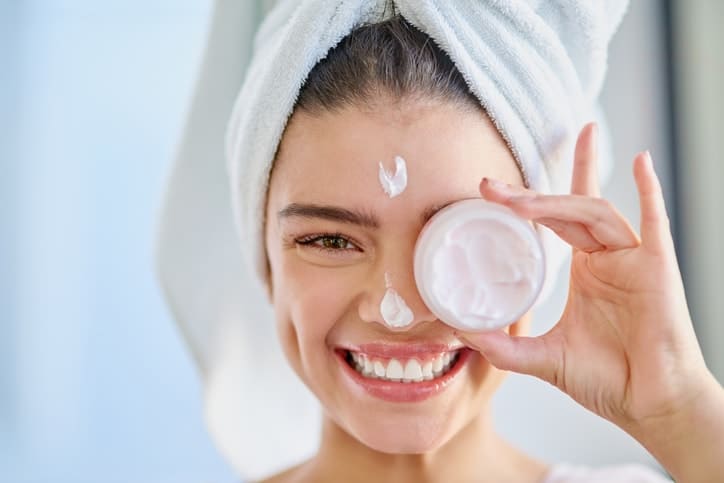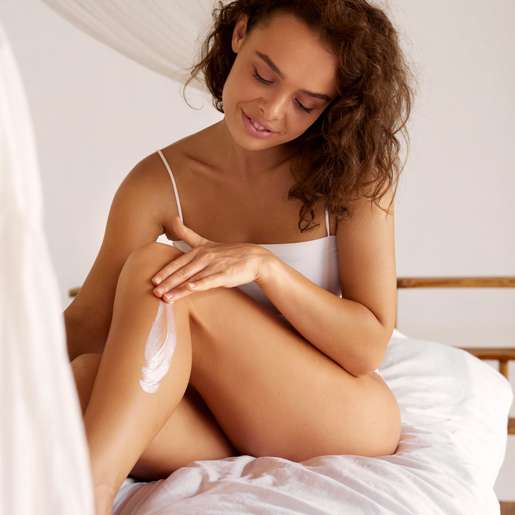Embarking on a journey towards radiant and healthy skin involves more than just a surface-level cleanse; it's about adopting a meticulous approach to removing makeup. Despite our best efforts, there are moments when conventional methods fall short, prompting a quest for expert advice on achieving a truly makeup-free face. Dermatologists and makeup artists generously share their insights, offering a comprehensive set of seven professional tips to elevate your makeup removal game.
1. Take Your Time for Tender Care:
Removing eye makeup demands a patient touch. Dermatologist Ranella Hirsch advocates for a leisurely approach, allowing makeup remover to work its magic over a few minutes. This patience softens the grip of mascara, eyeliner, and eyeshadow, ensuring a smooth and thorough removal. By avoiding rushed scrubbing, you not only prevent morning smudges but also safeguard the delicate skin around your eyes from potential irritation and premature aging caused by friction.
2. Opt for Soap and Water Over Makeup Wipes:
While makeup wipes may seem like a quick fix, they are best viewed as an initial step in the makeup removal process. Makeup artist Azra Red emphasizes the need for a subsequent face-washing session using water and a suitable face wash. Relying solely on wipes may leave behind subtle traces of makeup, potentially causing skincare concerns. The dynamic duo of water and face wash effectively cleanses the skin, preparing it for the nourishing embrace of a nighttime skincare regimen.
3. Invest in a Makeup-Removing Cleanser:
Esthetician Joanna Czech draws attention to a common oversight—using face washes ill-suited for makeup removal. If your post-cleanse face towel sports lingering BB cream smudges, it might be time for a change. Consider incorporating a dedicated makeup remover into your routine, such as micellar water or a cleansing oil/balm. These products excel at coaxing away even the most resilient makeup, ensuring a canvas free of stay-put foundations, liquid lipsticks, and brow pigments.
By weaving these expert-endorsed tips into your skincare ritual, you're not just removing makeup; you're engaging in a thoughtful process that nurtures your skin. The result is a perfectly clean canvas, poised to absorb the full benefits of your skincare routine and radiate a natural, healthy glow.
We understand that some may initially doubt the efficacy of using an oil-based product for facial cleansing. However, the latest generation of oil cleansers has proven to be truly transformative. Esthetician Joanna Czech sheds light on the science, stating, "A lot of people don't know that oil dissolves oil." Among her top picks are the Eucerin Cleansing Oil and Sensai Cleansing Oil. To enhance the cleansing effect, she recommends removing them with a washcloth. For those averse to the sensation of oil cleansers, Czech suggests exploring milky and gel textures as viable alternatives. Several other noteworthy options are also worth considering.
In the realm of makeup removal, one crucial yet often overlooked area is the delicate edge of the eyelid. Here, the accumulation of liner and mascara over time can lead to potential eye irritation. This becomes especially pertinent for those who employ waterproof liquid liners. Makeup artist Nick Barose advises meticulous attention to this zone, advocating for precision tools such as DHC cotton swabs with olive oil. These swabs excel at breaking down makeup without the need for vigorous scrubbing, preventing lashes from breaking off or falling out.
When dealing with stubborn mascara chunks, it's crucial to exercise caution. Never resort to tugging them off with your fingers. Instead, allow your makeup remover sufficient time to penetrate (harkening back to tip #1), and then delicately press down with a flat cotton pad. Move gradually in the direction of your lashes' growth to gently slide off the mascara, avoiding any potential harm.
In summary, the evolution of cleansing techniques encompasses the use of advanced oil-based products and emphasizes meticulous attention to often neglected areas. This comprehensive approach ensures not only effective makeup removal but also promotes the health and integrity of your skin and lashes.

Sweep your hair back with a hairband and pay attention to your hairline.
We understand the allure of your pillow when the clock strikes midnight, and even the simplest tasks like tying your hair into a ponytail can feel like a monumental effort. However, skipping this step may mean missing out on cleansing a crucial area—your hairline. Celebrity facialist Joanna Vargas emphasizes that makeup residue often accumulates around the hairline, leading to clogged pores and breakouts. Take a mere two seconds to secure your hair back, or opt for the convenience of a terry headband to ensure thorough makeup removal.
When it comes to choosing your tools, consider flat cotton pads over cotton balls. Dermatologist Rebecca Kazin advises against cotton balls, as they may leave behind residue or break down during use, leaving fibers on your lashes or skin. This residue can lead to irritation, disrupting your detox and soothing efforts. Opt for flat cotton pads with a quilted texture, with basic drugstore options being effective. However, for devoted makeup wearers, makeup artist Fiona Stiles recommends speciality versions like Japanese cotton squares, praising their non-shedding quality as akin to "magical little pillows" that effortlessly remove all traces of makeup.
After the meticulous task of makeup removal, it's crucial to follow up with moisture. Even if you don't have dry skin, dermatologist Rebecca Kazin emphasizes the importance of replenishing moisture, especially in sensitive areas like the eyes. Balm up your lips if you've just removed lipstick, and delicately apply eye cream to prevent dryness in the delicate eye area. This step ensures that your skin remains soft, supple, and hydrated, maintaining the health of the most sensitive skin on your face.
Makeup Removal Mistakes That Can Damage Your Skin
1. Selecting Unsuitable Products for Your Skin:
The skin on your face, being the most delicate on your body, acts as a natural barrier against environmental damage and free radicals. To effectively remove dirt and impurities, it is crucial to use gentle, non-aggressive formulas that respect your skin's integrity. This consideration is particularly significant for individuals dealing with acne, eczema, or rosacea, as they need products tailored to their specific skin needs. While the temptation may be to opt for aggressive formulas for that squeaky-clean feeling, achieving the same result is possible with a gentle formula designed to work harmoniously with the skin's natural pH, which is slightly acidic, around 5.5.
2. Improper Treatment of the Eye Area:
When removing eye makeup, it's essential to exercise care and avoid using fingers or inadequate cleansing tools. Opt for a dedicated eye makeup remover and employ gentle techniques while wiping away makeup. The use of cotton pads is recommended, avoiding excessive back-and-forth rubbing to prevent eye irritation. Employ sweeping motions, lifting up before each wipe. To maintain hygiene, it is advised to use a separate cotton pad for each eye, preventing the spread of potential infections.
3. Neglecting the Neck:
The neck, alongside the face and hands, is an area where premature aging becomes evident over time. Thoroughly cleansing the neck is crucial, and you can use the same products as on your face to remove impurities.
4. Aggressively Drying Your Face:
After gentle cleansing, it's essential not to resort to aggressive drying techniques. Pat your face with a towel or pad instead of rubbing with a flannel. Use a designated towel or flannel for your face, changing it every two or three days to prevent the accumulation of impurities and bacteria.
5. Using Very Hot Water:
Opt for warm water over very hot water, as extreme heat can damage the skin's natural lipid barrier, leading to dehydration and dullness. Whether in summer or winter, using lukewarm water is recommended. Finish your cleanse with a splash of cold water on hot days to feel refreshed, but avoid using cold water for cleansing.
6. Overreliance on Cleansing Wipes:
While the convenience of facial wipes may be tempting after a long day, they may not effectively remove all traces of makeup. Wiping the entire face with these wipes can also be irritating. Opt for cleansing creams, gels, or micellar water for a thorough and gentle makeup removal process, such as the ISDIN Micellar Solution.
Developing consistent and proper cleansing habits can transform your nightly routine into a refreshing ritual, allowing your skin to feel renewed and invigorated. Commit to these good cleansing practices daily to experience the positive difference they can make for your skin.





